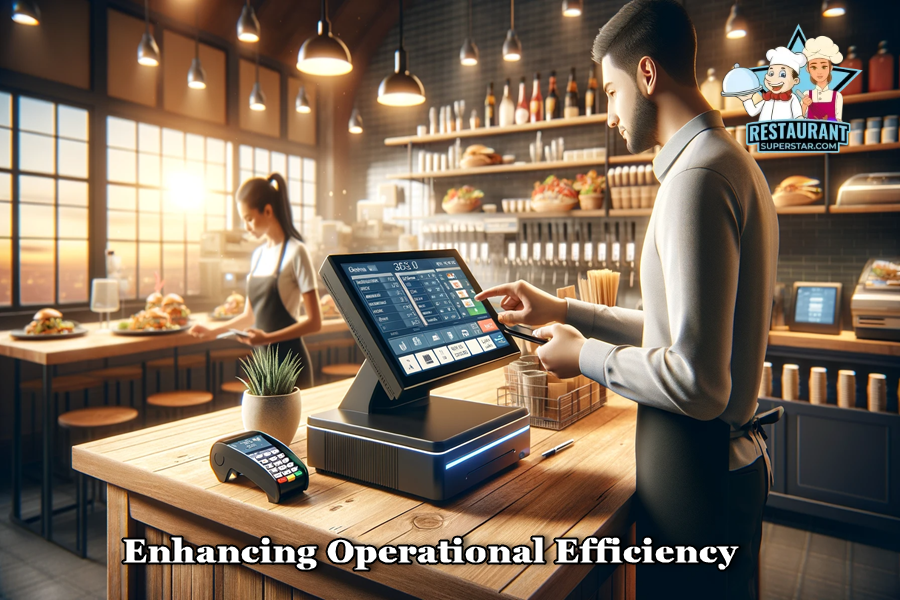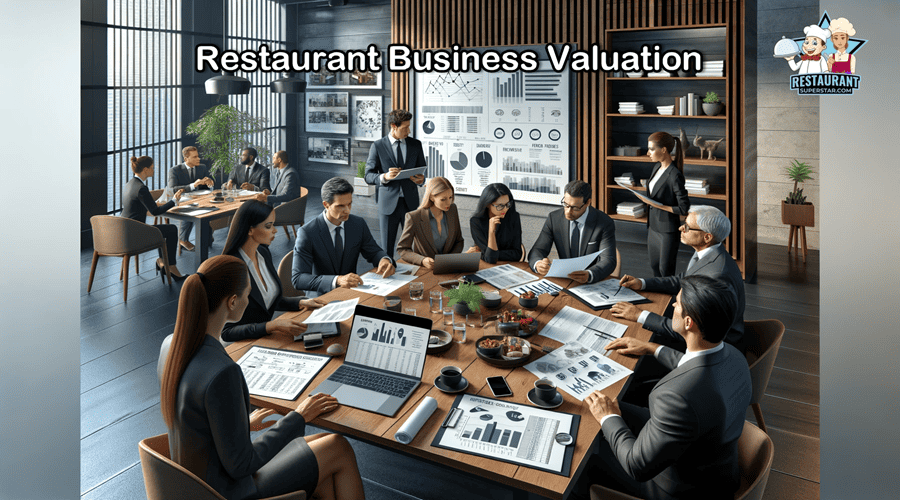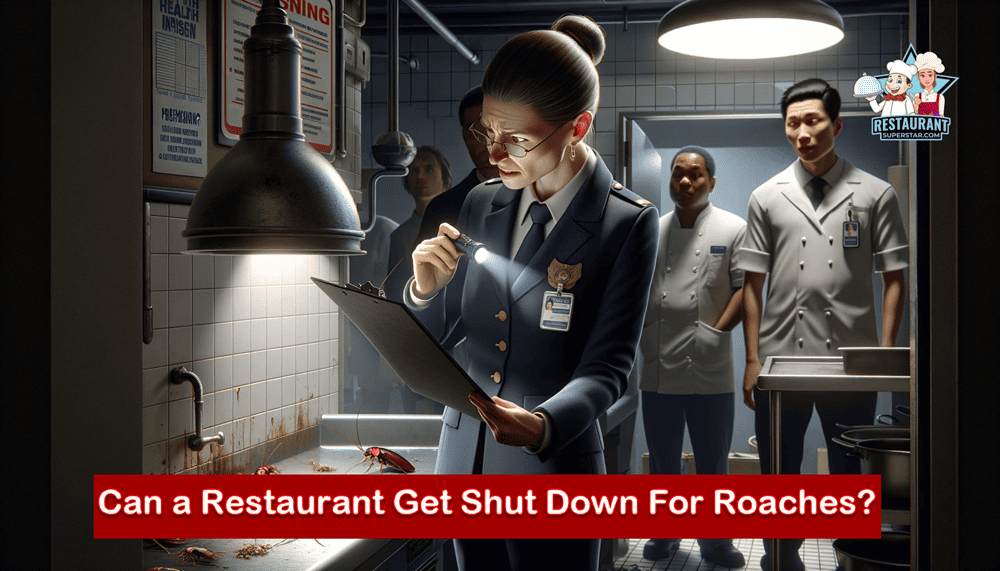The Advantages of POS Systems in Restaurants
Welcome to your essential guide on the Advantages of POS Systems in Restaurants. Suppose you’re a new restaurant owner, a young chef, or simply seeking detailed insights into the Advantages of POS Systems in Restaurants. In that case, you’ve come to the right place.
Our comprehensive article not only answers your primary queries but also delves into pivotal aspects you must pay attention to.
Stay with us as we unpack the multifaceted benefits of POS systems, promising insights that are both intriguing and invaluable to your restaurant business.
Advantages of POS Systems in Restaurants
Advantages of POS System in Restaurant? The advantages of a POS system in restaurants include streamlined business operations, real-time tracking and reporting, efficient inventory management, enhanced customer experience, simplified online ordering integration, comprehensive employee management, reduced operational costs, automated accounting and financial reports, robust anti-theft controls, and diverse payment options for faster transactions.
Curious for more? You’ve just scratched the surface. This article delves deeper into these advantages, explaining how they transform your restaurant into a more efficient, profitable, and customer-centric business.
Stick around as we guide you through every detail you need to know about the “Advantages of POS Systems in Restaurants,” providing you with valuable insights that could redefine your restaurant’s success story.
1- Enhancing Operational Efficiency

When it comes to running a restaurant, efficiency is critical. This is where the advantages of a POS system shine. Let’s break it down into simple terms.
First up, we’ve got Streamlined Business Operations. Imagine having a central hub that handles practically everything – from taking orders to processing payments and even keeping an eye on your inventory.
This is precisely what a POS system does. It’s like having a super-efficient assistant who never takes a day off.
Order Management Made Easy
Gone are the days of misinterpreted or lost orders. With a POS system, your staff can input orders directly into the system.
This means fewer mistakes, faster service, and happier customers. Plus, it’s a breeze for your kitchen staff to keep up with what’s cooking and what’s next.
Payment Processing – A Smooth Affair
Handling payments becomes a smooth process with a POS. Whether your customers pay by cash, card, or mobile, your POS system has covered it. It’s quick, easy, and lets your staff focus on providing excellent service rather than fumbling with cash or card machines.
Inventory Tracking at Your Fingertips
This might be a game-changer for you. A POS system keeps track of your inventory in real time.
You’ll know exactly when to reorder ingredients, which items are hot sellers, and which aren’t moving.
This means you can make intelligent decisions about what to stock up on and what to phase out, saving you money and reducing waste.
In short, the advantages of a POS system in a restaurant, especially for new restaurant owners and young chefs, are about making your life easier and your business smoother.
It’s about spending less time on paperwork and more time creating excellent food and experiences for your customers. And isn’t that why you got into this business in the first place?
1b – Real-time Tracking
Let’s dive into another fantastic advantage of restaurant POS systems: Real-time Tracking. It’s like having a 24/7 overview of what’s happening in your restaurant, and trust me, this is a game-changer for any new restaurant owner or young chef.
Always Know What’s Selling (and What’s Not)
With real-time sales data at your fingertips, you can quickly see which dishes are the stars of your menu and which need a bit of a tweak.
This isn’t just about keeping your best-sellers in stock but understanding your customers’ preferences. You can adjust your menu and offerings based on what’s popular, ensuring your diners always leave satisfied.
Inventory Levels in Check
Ever run out of a critical ingredient during a busy shift? It’s not fun, right? Real-time inventory monitoring is like having a vigilant eye on your stock levels.
The moment you’re running low on something, you know it.
This means you can reorder supplies before it becomes an issue, avoiding those awkward apologies to customers for menu items you can’t serve.
Make Informed Decisions Fast
Real-time data is a gold mine for making quick, informed decisions. When you know exactly how your restaurant performs at any moment, you can adapt rapidly to changes.
Is a particular dish flying off the shelves tonight? Run a special promotion on it. Are you noticing a lull in certain hours? Consider strategies to boost sales during those times.
In essence, real-time tracking provided by POS systems gives you a crystal clear picture of your restaurant’s performance, helping you stay agile and responsive.
It’s like having a bird’s eye view of your business, with the ability to zoom in on the details whenever you need.
For anyone in the fast-paced world of restaurants, this kind of insight is not just helpful – it’s essential.
2 – Financial Management and Cost Reduction
Stepping into the realm of financial savvy, let’s explore how a POS system becomes a crucial ally in inventory management – a cornerstone for cost reduction and enhanced financial management in your restaurant.
2a- Inventory Management: Your Key to Cost Control
Imagine having a meticulous accountant who’s also a wizard at logistics, all rolled into one. That’s what a POS system does for your inventory management.
- Precision in Tracking: First, a POS system tracks every ingredient in your restaurant – down to the last pinch of salt. This precision helps you understand consumption patterns, which are vital in predicting future needs. No more over-ordering or finding yourself short on a busy night.
- Avoiding Overstocking and Wastage: With real-time tracking, you know exactly how much of each item you have left. This means you can order just enough, reducing wastage and freeing up cash that would otherwise be tied up in excess inventory.
- Strategic Restocking: The beauty of a POS system is in its ability to alert you when it’s time to reorder. But it’s not just about reminding you; it’s about providing data-driven insights. For instance, if you notice that a particular ingredient is consistently running out faster than anticipated, you can adjust your ordering schedule and quantities accordingly.
- Preventing Revenue Loss: Let’s face it, every item that goes unsold or wasted is money down the drain. With a POS system, you’re better equipped to keep your inventory lean and mean, focusing on what sells and eliminating what doesn’t.
- Data-Driven Menu Decisions: Over time, your POS system accumulates a wealth of data about which dishes are most popular and profitable. This allows you to make informed decisions about your menu, focusing on offerings that delight your customers and bring in the most revenue.
In short, a POS system’s financial management and cost-reduction capabilities are indispensable tools in the modern restaurant’s arsenal.
They help you run a tighter ship, where efficiency and foresight increase profitability and reduce financial stress.
2b – Automated Accounting and Reporting
In the bustling world of restaurant management, staying on top of your finances is crucial, but let’s face it – accounting can be quite the headache.
This is where a POS system’s automated accounting and reporting feature becomes a lifesaver. It’s like having your financial assistant tirelessly working to keep your books in order and your mind at ease.
- Financial Reports at Your Fingertips: Imagine, at the end of a long day, instead of poring over receipts and sales records, you can generate a report with a few clicks. Your POS system automatically tracks sales, expenses, and profits, offering a clear snapshot of your restaurant’s financial health. These instant reports are not just time-savers; they’re clarity providers.
- Profit and Loss Statements Made Easy: Understanding your restaurant’s profitability has always been challenging. With automated profit and loss statements, you can quickly identify which areas of your business are thriving and which need attention. This real-time insight helps make informed decisions, ensuring your restaurant stays on the path to profitability.
- Streamlined Tax Preparation: Let’s talk about everyone’s favorite subject – taxes. Your POS system helps streamline this often daunting task by organizing your sales data, essential for accurate tax reporting. This means less scrambling at tax time and fewer errors, potentially saving you from costly audits and penalties.
- Reducing Human Error: Manual accounting is prone to errors; even small mistakes can lead to big problems. Automation reduces the risk of these errors, ensuring that your financial data is accurate and reliable.
- Data-Driven Decision Making: With all your financial data organized and easily accessible, you’re better positioned to make strategic decisions. Whether it’s adjusting your menu prices, planning for seasonal changes, or investing in marketing, having a solid understanding of your financials is critical.
A POS system’s automated accounting and reporting feature is about giving you peace of mind and control over your restaurant’s finances.
2c – Reduced Operational Costs: Streamlining for Savings
When it comes to running a restaurant, every penny counts. This is where a POS system can be a game-changer, especially for those just starting in the culinary world or looking to tighten their budget.
By streamlining services, a POS system doesn’t just make life easier; it actively helps reduce operational costs. Here’s how:
- Efficiency Equals Savings: First things first, efficiency is critical to cost-saving. A POS system streamlines your operations, from order taking to billing. This means your staff can handle tasks faster and more accurately, reducing wait times and increasing table turnover. More happy customers and more sales without the need for extra hands on deck.
- Cutting Down on Waste: With precise inventory tracking, a POS system helps you order precisely what you need, reducing the amount of wasted ingredients. This not only saves money but also contributes to a more sustainable operation.
- Reducing Errors and Thefts: Human errors and theft, unfortunately, are part of the restaurant business. A POS system minimizes these risks by automating transactions and keeping a tight sales and inventory record. Fewer mistakes and less pilferage directly translate into cost savings.
- Data-Driven Decisions for Cost Control: The ability to analyze sales patterns and customer preferences helps you make informed decisions about menu pricing, staff scheduling, and promotional offers. This means you’re not just blindly cutting costs but strategically optimizing your operations based on solid data.
- Energy and Resource Management: Believe it or not, a POS system can even help you manage your utility and resource usage more efficiently. By analyzing busy times and slow periods, you can better plan your energy consumption, like adjusting heating, cooling, and lighting, leading to lower utility bills.
A POS system is more than just a tool for transactions. It’s an investment in your restaurant’s financial health.
Streamlining services and providing valuable insights helps reduce operational costs in multiple areas, making it an indispensable asset for new restaurant owners and young chefs looking to make a mark in the industry without breaking the bank.
3: Improving Customer Experience
In the hospitality game, customer satisfaction is everything. A positive dining experience can turn first-time visitors into regulars, and a key player in this is your POS system.
It’s not just about technology; it’s about creating memorable moments for your guests. Let’s explore how a POS system can elevate your customer service game.
3a – Faster Service and Reduced Wait Times
- Quicker Order Processing: Time is of the essence in a restaurant, and a POS system understands this perfectly. It lets your staff input orders quickly and accurately, sending them directly to the kitchen without fuss. This reduces the time it takes to get the order cooking, speeding up the entire service process.
- Efficient Payment Transactions: Gone are the days of slow, clunky payment processes. With a POS system, your staff can process payments quickly, whether cash, card, or digital wallets. This impresses your customers and frees up tables faster, allowing you to serve more diners.
- Order Accuracy Leads to Customer Delight: Nothing dampens the dining experience quite like receiving the wrong order. A POS system reduces these errors significantly, ensuring that your customers are ordered what they get. This accuracy goes a long way in keeping your customers happy and returning for more.
- Real-time Menu Updates: Have you ever had to tell a customer that an item they ordered is no longer available? With a POS system, your menu reflects real-time updates. If a dish is sold out, it won’t show up on the digital menu, saving your customers from disappointment and your staff from awkward conversations.
- Personalized Service: Some advanced POS systems can track customer preferences and past orders. This means you can offer a tailored dining experience – like suggesting a dish they enjoyed last time or knowing their favorite table.
A POS system does more than streamline operations; it enhances the dining experience for your customers. Quicker service, accurate orders, and personalized touches make a memorable visit.
3b – Diverse Payment Options
In today’s fast-paced and digitally driven world, flexibility in payment options is not just a convenience; it’s a necessity.
This is where modern POS systems step up, offering a range of payment methods to cater to every customer’s preference.
Let’s explore how:
- All Forms of Payment Welcome: A modern POS system is like a universal payment gateway. Whether your customers want to pay with traditional cash, swipe their credit or debit card, or use the latest digital wallet apps, your POS system can handle everything. This versatility means you’re constantly turning a customer away even if you don’t accept their preferred mode of payment.
- Contactless Transactions for Safety and Speed: In an era where health and safety are paramount, contactless payments have become more than just a trend. POS systems equipped with contactless payment technology allow customers to pay with a simple tap of their card or phone. It’s not only about minimizing physical contact; it’s also about speed and convenience, making the payment process swift and hassle-free.
- Mobile Payment Integration: With the rise of mobile wallet applications like Apple Pay, Google Pay, and others, many customers now prefer to pay using their smartphones. Modern POS systems seamlessly integrate with these technologies, offering a payment solution that aligns with the tech-savvy diner’s lifestyle.
- Splitting Bills Made Simple: We’ve all been there – the end of a group meal where the bill needs to be split. Advanced POS systems simplify this process, allowing bills to be divided by item or evenly and letting each customer pay their share the most conveniently. This functionality can turn a potentially awkward situation into a smooth, customer-friendly experience.
- Enhanced Security and Trust: With diverse payment options also comes the responsibility of ensuring secure transactions. Modern POS systems have robust security features that protect the customer’s financial data and your business from fraud. This level of security builds trust and encourages customers to return, knowing their transactions are safe with you.
The diverse payment options offered by modern POS systems are not just about keeping up with technology; they’re about providing excellent customer service.
By accommodating various payment preferences, you show your customers that their convenience and satisfaction are your top priorities.
For those just starting in the restaurant business, this aspect of a POS system is a crucial element in building a customer-centric brand.
3c – Enhanced Online Ordering
In an era where convenience is king, the ability to order food online has become more than just a trend – it’s a staple.
As a new restaurant owner or a budding chef, embracing this digital shift is crucial.
Modern POS systems offer seamless integration with food delivery apps and online ordering platforms, opening up a new avenue for your business to thrive.
Let’s dive into how this integration can revolutionize how you serve your customers.
- Effortless Integration with Delivery Apps: Today’s POS systems are designed to work hand-in-hand with popular food delivery apps. This means your menu can be easily accessible to customers who prefer to dine at home. Orders placed through these apps are directly funneled into your POS system, streamlining the order-taking process and reducing the chance of errors.
- Managing Online Orders Made Simple: Handling online orders becomes a breeze with a POS system. Everything is centralized, whether the orders come from your website or third-party apps. This consolidation makes it easier for your kitchen staff to track orders, ensuring that in-house and online customers receive their meals with the same efficiency and quality.
- Real-Time Menu Updates: Have you ever had to cancel an online order because an item was no longer available? With a POS system, your online menu reflects real-time changes. If a dish is sold out or a particular ingredient is unavailable, the menu updates instantly, avoiding customer disappointment and operational hiccups.
- Data Analytics for Targeted Marketing: One of the hidden gems of integrating online ordering with your POS system is the wealth of data you collect. You gain insights into customer preferences, peak ordering times, and popular dishes. This information can be gold for crafting targeted marketing campaigns and special offers, drawing even more customers to your digital doorstep.
- Enhancing Customer Convenience: By offering online ordering, you’re expanding your reach and amplifying convenience for your customers. In today’s fast-paced world, the ability to easily order from a mobile device or computer is a service many customers have come to expect. Meeting this expectation can significantly boost your restaurant’s appeal.
Integrating your POS system with online ordering and food delivery apps is innovative in today’s digital-first world.
It streamlines operations, expands your customer base, and offers valuable insights into your business.
For those embarking on their culinary journey, this integration is a powerful tool to stay competitive and relevant in the ever-evolving restaurant landscape.
4- Employee Management and Productivity
A successful restaurant is only as good as its team, and managing that team efficiently is vital to your role as a restaurant owner or chef.
This is where the POS system becomes more than just a sales tool; it transforms into a vital component of your employee management strategy.
Let’s unpack how a POS system can enhance how you manage your staff.
4b – Efficient Employee Management
- Tracking Employee Hours with Ease: Say goodbye to manual timecards and hello to digital efficiency. A POS system allows your staff to clock in and out directly through the system. This means you have an accurate record of work hours, making payroll processing much simpler and more precise.
- Monitoring Attendance and Punctuality: Keeping track of who’s at work and who’s not is effortless with a POS system. It provides a clear view of attendance patterns, helping you manage staffing levels effectively. This insight is crucial in ensuring you have the right amount of hands-on deck at all times, especially during peak hours.
- Assessing Productivity and Performance: With a POS system, you can monitor various performance metrics like the number of tables served, average service time, and customer feedback. This data is invaluable in assessing employee productivity, identifying training needs, and recognizing top performers.
- Simplified Scheduling and Shift Planning: Managing staff schedules can be complex, but a POS system simplifies it. You can create and adjust shifts based on forecasted business levels, employee availability, and performance data. This leads to more efficient staffing, reducing labor costs and ensuring customer demands are always met.
- Enhancing Communication and Transparency: A POS system can serve as a communication hub, providing staff with updates on menu changes, special promotions, or general announcements. This fosters a transparent and informed work environment where everyone is on the same page.
A POS system is an invaluable asset in managing your restaurant’s workforce. It streamlines various aspects of employee management, from tracking hours and attendance to evaluating performance and scheduling.
For new restaurant owners and aspiring chefs, leveraging these features can lead to a more productive, efficient, and harmonious work environment, ultimately contributing to the overall success of your establishment.
4c – Anti-Theft Controls and Security
One of the less talked about yet crucial aspects of managing a restaurant is security – particularly protecting your business from internal theft and fraud. It’s a sensitive topic, but one that can’t be ignored.
Thankfully, modern POS systems come equipped with robust anti-theft controls and security features, offering peace of mind and a safeguard against such risks.
Let’s delve into how these systems help fortify your restaurant’s security.
Securing Your Earnings and Data
- Transaction Monitoring and Alerts: POS systems are designed to monitor all transactions meticulously. Any unusual activity, like voids or refunds, can trigger alerts. As a restaurant owner or chef, you can review these incidents to ensure they’re legitimate, helping to prevent any unauthorized transactions that could hint at theft.
- User Access Levels: One of the most effective anti-theft features is the ability to set different access levels for staff. You can restrict who has the authority to process refunds, discounts, or void sales. Limiting these sensitive functions to trusted senior staff or management reduces the risk of misappropriation of funds.
- Detailed Sales and Inventory Reports: Discrepancies can be spotted quickly with real-time sales and inventory tracking. If the numbers don’t add up – say, if more ingredients are being used than what’s being sold – it could indicate theft. These reports allow swift action to be taken, deterring potential theft and ensuring inventory accuracy.
- Video Integration: Some advanced POS systems can integrate with surveillance systems, linking transaction data with video footage. This means you can visually verify transactions, adding an extra layer of security and discouraging potential internal theft.
- Secure Payment Processing: POS systems also secure the customer’s transaction side. They employ encryption and compliance with payment card industry (PCI) standards to protect against external fraud and data breaches, ensuring your business and customer data remain secure.
Incorporating a POS system with robust security features is a smart move for any restaurant, particularly those new to the industry.
It is a deterrent against internal theft and provides a secure environment for your staff and customers.
This level of security protects your revenue and builds trust – a crucial ingredient in the recipe for a successful restaurant.
5 – Additional Benefits and Features
Expanding beyond the fundamental operations, modern POS systems offer additional features that can significantly enhance your restaurant’s appeal and profitability.
One such feature, particularly impactful in fostering customer relationships, is the integration of loyalty programs.
Let’s explore how POS systems can be a catalyst in creating and managing successful loyalty programs.
5b – Loyalty Programs Integration
- Easy Enrollment and Management: A POS system simplifies enrolling customers into your loyalty program. During the checkout process, customers can be prompted to join, and their information is seamlessly integrated into the system. This ease of enrollment encourages more customers to participate, increasing your loyalty program’s reach.
- Tracking Points and Rewards: With a POS system, tracking loyalty points and rewards becomes automated. Customers can quickly check their points balance and redeem rewards, enhancing their dining experience. This real-time tracking also ensures accuracy, maintaining trust and satisfaction among your loyalty program members.
- Personalized Marketing: A POS system can store valuable customer data, such as dining preferences and visit frequency. This information can be used to create customized marketing campaigns, such as sending targeted offers or special birthday discounts. Personalized interactions like these make customers feel valued, increasing the likelihood of repeat visits.
- Analyzing Program Effectiveness: Through the data collected, your POS system can help you analyze the effectiveness of your loyalty program. You can identify which rewards are most popular, what times of year see increased loyalty activity, and which customer segments are most engaged. This insight allows you to refine and optimize your loyalty program for maximum impact.
- Integrating with Marketing Efforts: Some POS systems integrate email marketing tools and social media platforms, making it easier to promote your loyalty program. You can send newsletters announcing new rewards, share customer success stories on social media, and create a buzz around your program, all directly linked to your POS system.
Incorporating a loyalty program into your POS system is not just about rewarding customers; it’s about building lasting relationships.
This feature is an invaluable tool for new restaurant owners and chefs to create a loyal customer base that feels connected and appreciated.
It’s a long-term investment in customer retention and brand loyalty, contributing significantly to your restaurant’s overall success and reputation.
5b – Hassle-Free Credit and Debit Card Processing
In today’s digital age, the ability to process credit and debit card transactions swiftly and securely is not just a convenience; it’s a necessity.
This is where POS systems excel, offering hassle-free processing that benefits your business and customers.
For new restaurant owners and chefs aiming to provide seamless service, understanding the ease of card processing through a POS system is essential.
Let’s explore how this feature simplifies transactions and enhances the dining experience.
Effortless Card Transactions for a Smooth Dining Experience
- Quick and Easy Payments: The days of long waits for card processing are over. Modern POS systems rapidly handle credit and debit card transactions, reducing customers’ waiting time to pay. This efficiency is key in a high-paced restaurant environment where quick service is valued.
- Versatile Terminal Options: Today’s POS systems offer various terminal options, including portable, countertop, and mobile devices. This flexibility allows for payments to be processed at the table, at a traditional checkout counter, or even remotely for takeout and delivery orders, catering to various dining preferences and scenarios.
- Enhanced Security Measures: Security is a top priority in card processing. POS systems have advanced encryption and adhere to strict Payment Card Industry Data Security Standard (PCI DSS) compliance. This ensures every transaction is secure, protecting your business and customers from potential fraud.
- Integration with Other Services: Many POS systems integrate seamlessly with accounting software and other business management tools. This integration means that every card transaction is automatically recorded and reconciled, simplifying your accounting processes and reducing the chances of manual errors.
- Customer Trust and Confidence: When your customers see that you use a reliable and efficient system for card processing, it builds trust. They feel confident that their payment information is handled securely, which can be a deciding factor for repeat business.
The ease of credit and debit card processing through a POS system is a critical advantage in the modern dining experience.
It’s not just about technological advancement; it’s about providing a service that meets the expectations of today’s consumers.
For those new to the restaurant scene, this feature of a POS system is an invaluable asset in offering a customer-friendly, secure, and efficient payment experience.
5c – Live Order Changes and Tracking Service
In the dynamic environment of a restaurant, the ability to make live order changes and track them in real time is a game-changer.
This functionality, offered by modern POS systems, equips your team to handle the unpredictable nature of food service with agility and precision.
This feature can significantly enhance operational efficiency and customer satisfaction for new restaurant owners and chefs.
Let’s delve into the benefits of real-time order modifications and tracking.
Navigating the Fast-Paced World of Dining with Ease
- Instant Order Modifications: We’ve all been there – a customer changes their mind at the last minute, or there’s a special request for a dietary restriction. With a POS system, such changes can be updated in the order instantly, ensuring the kitchen staff receives the revised request immediately. This minimizes confusion, reduces the likelihood of errors, and accommodates customer needs swiftly.
- Real-Time Communication Between Front and Back of House: Effective communication between front-of-house staff and the kitchen is vital to a smooth-running restaurant. Live order tracking ensures everyone is on the same page. As orders are modified or added, kitchen staff can see real-time updates, allowing for a synchronized workflow.
- Enhanced Customer Experience: When you can quickly adapt to customer requests, you enhance their overall dining experience. Whether adding an extra ingredient or modifying a dish, the ability to do so promptly shows your commitment to customer service, leaving a lasting positive impression.
- Efficient Handling of Peak Hours: The volume of orders and changes can be overwhelming during busy periods. A POS system with live order tracking helps manage this rush effectively. You can monitor the flow of orders, prioritize as needed, and ensure timely service, even when the restaurant is at total capacity.
- Data-Driven Insights for Future Improvements: Live order tracking provides valuable data beyond immediate operational benefits. You can analyze patterns in order changes, identify frequently requested modifications, and use this insight to refine your menu and service approach.
In essence, live order changes and tracking through a POS system provide a level of flexibility and control that is vital in today’s fast-paced restaurant environment.
Leveraging this technology for those starting in the culinary industry can set the foundation for a responsive, customer-focused, and efficient operation.
Conclusion
As we wrap up our exploration of the numerous advantages of POS systems in restaurants, it’s clear that these technologies are more than just transaction tools; they are central pillars in the modern culinary landscape.
Key Takeaways
- Enhanced Operational Efficiency: POS systems streamline business operations, making processes like order taking, payment processing, and inventory management more efficient and error-free.
- Financial Management and Cost Reduction: POS systems help reduce operational costs and simplify financial management with inventory tracking and automated accounting features.
- Improved Customer Experience: Through faster service, diverse payment options, and enhanced online ordering capabilities, POS systems significantly improve the dining experience, leading to higher customer satisfaction and loyalty.
- Effective Employee Management: By facilitating employee hour tracking, attendance, and performance analysis, POS systems contribute to a more productive and harmonious work environment.
- Robust Security Features: POS systems’ anti-theft controls and secure transaction processing safeguard your business against internal and external threats.
- Additional Benefits: Features like loyalty program integration and live order tracking offer additional customer engagement and operational control layers.
The Transformative Impact of POS Systems:
Implementing a POS system in a restaurant is not just a step toward technological adoption; it’s a strategic move toward a more prosperous, efficient, and customer-centric business model.
These systems address many challenges restaurants face today, from operational bottlenecks to customer service enhancements.
By leveraging the power of POS technology, restaurant owners and chefs can streamline their day-to-day operations and gain valuable insights into their business, leading to informed decision-making and strategic growth.
Adopting a POS system is a testament to a restaurant’s commitment to innovation, efficiency, and exceptional customer service.
It’s an investment in the future, positioning your restaurant to thrive in an ever-evolving industry.
As the culinary world embraces technological advancements, those who leverage POS systems will undoubtedly stand at the forefront of this exciting journey.
Jeff Smith is a Restaurant Consultant with over 20 years of hospitality experience ranging from server to owner and general manager. He focuses on Restaurant POS technology as well as restaurant marketing. Check out our world-famous restaurant resources page for a comprehensive offering of hand-picked resources and tools to help your business. You can also check out some of our other restaurant business articles.





